Results 10,821 to 10,830 of 12091
Thread: Anandtech News
-
10-13-20, 06:51 AM #10821
Anandtech: Imagination Announces B-Series GPU IP: Scaling up with Multi-GPU
It’s almost been a year since Imagination had announced its brand-new A-series GPU IP, a release which at the time the company called its most important in 15 years. The new architecture indeed marked some significant updates to the company’s GPU IP, promising major uplifts in performance and promises of great competitiveness. Since then, other than a slew of internal scandals, we’ve heard very little from the company – until today’s announcement of the new next-generation of IP: the B-Series.
The new Imagination B-Series is an evolution of last year’s A-Series GPU IP release, further iterating through microarchitectural improvements, but most importantly, scaling the architecture up to higher performance levels through a brand-new multi-GPU system, as well as the introduction of a new functional safety class of IP in the form of the BXS series.
More...
-
10-13-20, 06:51 AM #10822
Anandtech: ASRock Industrial's NUC 1100 BOX Series Brings Tiger Lake to UCFF Systems
Intel's introduction of the Tiger Lake U-series processors with support for a range of TDPs up to 28W has resulted in vendors launching a number of interesting systems with a twist to the original NUC's 100mm x 100mm ultra-compact form-factor (UCFF). Notable among these have been the GIGABYTE's BRIX PRO (3.5" SBC form-factor), and ASRock Industrial's STX-1500 mini-STX board, with the latter adopting the embedded versions of the Tiger Lake-U processors. ASRock Industrial also happens to be one of the first to adopt the Tiger Lake-U series for traditional UCFF systems with the launch of their NUC 1100 BOX series.
Intel's Tiger Lake-based NUCs (Panther Canyon and Phantom Canyon) are an open secret in tech circles, but are yet to be officially announced. ASRock Industrial's Tiger Lake NUCs such as the NUC BOX-1165G7 have also been hinted at in Intel's marketplace - a retail follow-up to the embedded market-focused iBOX 1100 and NUC 1100 solutions. Today's announcement makes the Tiger Lake NUCs from ASRock Industrial official. The company is launching three models in this series - NUC BOX-1165G7, NUC BOX-1135G7, and NUC BOX-1115G4. The specifications are summarized in the table below.
The striking aspect of the NUC 1100 BOX-series chassis is the similarity to the 4X4 BOX-4000U series.ASRock Industrial NUC 1100 BOX (Tiger Lake-U) Lineup Model NUC BOX-1115G4 NUC BOX-1135G7 NUC BOX-1165G7 CPU Intel Core i3-1115G4
2C/4T
1.7 - 4.1 GHz (3.0 GHz)
12 - 28 W (28W)Intel Core i5-1135G7
4C/8T
0.9 - 4.2 GHz (2.4 GHz)
12 - 28 W (28W)Intel Core i7-1165G7
4C/8T
1.2 - 4.7 GHz (2.8 GHz)
12 - 28 W (28W)GPU Intel® UHD Graphics for 11th Gen Intel® Processors (48EU) @ 1.25 GHz Intel® Iris® Xe Graphics (80EU) @ 1.3 GHz Intel® Iris® Xe Graphics (96EU) @ 1.3 GHz DRAM Two DDR4 SO-DIMM slots
Up to 64 GB of DDR4-3200 in dual-channel modeMotherboard 4.02" x 4.09" UCFF Storage SSD 1x M.2-2280 (PCIe 4.0 x4 (CPU-direct) or SATA III) DFF 1 × SATA III Port (for 2.5" drive) Wireless Intel Wi-Fi 6 AX200
2x2 802.11ax Wi-Fi + Bluetooth 5.1 moduleEthernet 1 × GbE port (Intel I219-V)
1 × 2.5 GbE port (Intel I225-LM)USB Front 1 × USB 3.2 Gen 2 Type-A
2 x USB 3.2 Gen 2 Type-CRear 2 × USB 3.2 Gen 2 Type-A Display Outputs 1 × HDMI 2.0a
1 x DisplayPort 1.4
2 × DisplayPort 1.4 (using Front Panel Type-C ports)Audio 1 × 3.5mm audio jack (Realtek ALC233) PSU External (90W) Dimensions Length: 117.5 mm
Width: 110 mm
Height: 47.85 mmMSRP ? ? ?
According to the products' datasheet, ASRock Industrial plans to get the two Type-C ports in the front panel certified for USB4. Since the certification plan is still pending, they are being advertised as USB 3.2 Gen 2 for now. They also believe that Thunderbolt 3 devices can be used in the front Type-C ports (since Intel claims four USB4 / Thunderbolt 4 ports on Tiger Lake) - that would be interesting to test out, given the logo on the chassis only indicates SuperSpeed 10Gbps with DP-Alt Mode support.
The key updates compared to the existing NUCs from various vendors (based on Comet Lake-U) are the support for four simultaneous 4Kp60 displays along with the 2.5 GbE wired LAN interface. The performance advantages provided by the 10nm Tiger Lake with its new microarchitecture may probably help the NUC BOX-1100 series get the edge over the 4X4 BOX-4000U series (based on the Renoir APUs) in single-threaded workloads. On the multi-threaded side and GPU-intensive workloads, it is shaping up to be an interesting tussle - one we hope to analyze in more detail in our hands-on review.
Since the unit targets the embedded market also, it has the usual bells and whistles including an integrated watchdog timer and an on-board TPM. Pricing is slated to be announced towards the end of October 2020.
More...
-
10-13-20, 12:46 PM #10823
Anandtech: The Apple 2020 Fall iPhone Event Live Blog 10am PT (17:00 UTC)
Today Apple is holding its second fall 2020 launch event - only a few weeks after the traditional September launch which saw the unveiling of the a new Apple Watch, and a new line of iPads, including the new iPad Air which sports the new 5nm Apple A14 SoC. What was missing from the September event was any new announcements of new iPhones - which this year seem to have slightly slipped in terms of timing.
Today's event should cover the new iPhones, and if industry reports are accurate, we actually should be seeing quite a slew of new devices in the form of two "regular" iPhones and two Pro models, for a total of four devices. It should demark the first time in 3 years that Apple will be introducing a new iPhone design, and this generation should be the first one to support 5G connectivity.
As always, we'll be live-blogging the event and hold live commentary on Apple's newest revelations.
The event starts at 10am PDT (17:00 UTC).
More...
-
10-13-20, 04:56 PM #10824
Anandtech: More On NVIDIA Quadro Brand Retirement: Embracing the Graphics and Compute
Now that NVIDIA’s second GTC event of the year has wrapped up, we’ve finally gotten a chance to following up on last week’s announcement of NVIDIA’s RTX A6000 video card, and what that means for NVIDIA’s Quadro brand. In short, NVIDIA has confirmed that the Quadro brand is going away for sure, and as we suspected, it’s largely due to the overlap between graphics and compute.
As a quick refresher, last week NVIDIA launched their new professional visualization-focused video card, the RTX A6000. Based on the new GA102 GPU, the card ticks all the boxes for a high-end, pro-grade video card; and under normal circumstances, it would be part of NVIDIA’s Quadro family of products. However the card was notably excluded from the Quadro family in something of a last-minute change. At the time it wasn’t clear just what this meant for the Quadro brand as a whole, but now that GTC has wrapped we’ve been given some better insights into what’s going on.
First and foremost, NVIDIA has confirmed that the Quadro brand is being retired, or “streamlined” as the company calls it. Similar to the Tesla brand a couple of years back, the brand is set to be slowly retired from the market, as new professional visualization cards are released without the Quadro branding. Going forward, all of these cards will be given brand-less names, such as the “NVIDIA RTX A6000” and “NVIDIA A40”.
The more interesting aspect to this change is why: why would NVIDIA retire one of its oldest video card brands after so long? After all, the market for pro cards isn’t going away, and it remains a tidy, profitable business for NVIDIA. At the time we suspected that this has to do with the increasing overlap in NVIDIA’s product lines between professional visualization cards and compute cards, and the company has since confirmed that our hunch was correct.
As NVIDIA has continued to expand into the compute market, their professional visualization (ProViz) and compute products have increasingly overlapped in terms of features and pricing. As NVIDIA already charges “full” price for both their compute and ProViz cards, there are little-if-any feature differences between the two: desktop ProViz cards have the same access to compute features as compute cards. And compute cards, though almost exclusively server-mounted, can be provisioned as a virtual ProViz card as well.
One of the consequences of which has been that NVIDIA’s own messaging on what cards can do what tasks has become unfocused, never mind potentially confusing customers. If you need an actively-cooled desktop card for running neural network prototyping, for example, what card do you buy? Previously it was the Quadro card, despite the fact that it was a ProViz part. Similarly, the ex-Tesla V100 makes a great part for provisioning a virtual Quadro instance, even though it’s not a Quadro part.
As a result, NVIDIA has opted to go the route of essentially merging their compute and ProViz hardware lineups in an effort to simplify their offerings. NVIDIA wants for there to be a single brand – NVIDIA – which covers both markets, reflecting the flexibility of their cards and (largely) eliminating questions over which cards can be used for graphics or compute. At the same time, this also allows NVIDIA to reduce the number of hardware SKUs offered, as they no longer need overlapping products at the fringes of these markets.
Ultimately, the market for ProViz and for computing has quickly become one in the same. Though the two differ in their specific needs, they still use the same NVIDIA hardware and pay the same NVIDIA “premium”. So both are set to become a single product line to cover the needs of all of NVIDIA’s professional and commercial customers, whatever their graphics and compute needs.
More...
-
10-13-20, 07:39 PM #10825
Anandtech: Apple Announces iPhone 12 Series: mini, Regular, Pro & Pro Max, all with 5
A little later in the year than usual, but today we finally saw the announcement of Apple’s newest line-up of iPhones. This time around we didn’t get two, or even three phones, but a total of four new devices ranging both in size as well as in pricing. The iPhone 12 series is a major leap for Apple as they represent the company’s first ever 5G devices, preparing the company for the next generation of cellular networks for the better part of this decade.
The iPhone 12 Pro and 12 Pro Max are both straightforward upgrades to the 11 Pro series, whilst the regular iPhone 12 represents the mainstream option as a successor to the iPhone 11. The new entry in the line-up is the iPhone 12 mini – an incredibly exciting device for people who are looking for a more diminutive form-factor device, being smaller and more light-weight than even the iPhone SE released earlier in the year.
Thanks to the new A14 SoC, we’re seeing upgraded performance across the board, as well as greatly improve image processing on the camera systems, with particularly the iPhone 12 Pro Max standing out in terms of its camera systems.
More...
-
10-14-20, 09:31 AM #10826
Anandtech: Samsung PRO Plus and EVO Plus SDXC UHS-I 128GB Memory Cards Capsule Review
Samsung had last revamped their SDXC cards lineup back in 2014 to delineate them into the standard, PRO, and EVO categories. Since then, the company slowly phased out the full-sized cards from their lineup, and started to focus on microSDXC cards. This week, they are aiming to get back into the SDXC cards market for creators and professionals in the content capture market segment. Two new product families are being announced - the PRO Plus, and the EVO Plus. Both families are UHS-I cards, with the PRO Plus aimed at professionals, and the EVO Plus at creators. Samsung sampled the 128GB capacity cards in both families ahead of the retail launch. This review takes the cards out for a spin and attempts to analyze their value proposition.
More...
-
10-15-20, 03:21 PM #10827
Anandtech: The Corsair H150i Elite Capellix AIO Cooler Review: Go Big Or Go Home
Today we are taking a look at the largest member of Corsair's new Elite Capellix AIO cooler family, the H150i Elite Capellix. An upgrade for the renowned H150i Pro RGB, the H150i Elite Capellix features a 400 mm long radiator that holds three 120 mm fans, all the while incorporating improved iCUE integration and more powerful cooling fans.
More...
-
10-16-20, 12:14 PM #10828
Anandtech: Test Driving SPECviewperf 2020: A Look At The Latest In Workstation GPU Be
Over the years, the Standard Performance Evaluation Corporation's SPECviewperf benchmark has become the industry standard for workstation GPU benchmarking. Owing to the fact that, unlike video games, there's little concept of a "standard" workload for CAD, content creation, and visual data analysis tools, as well as the sheer complexity of these applications, there is an ongoing need for a standardized multi-application benchmark. This is both to offer a wider, holistic view of GPU performance under workstation applications, and even more fundamental than that, to provide a proper apples-to-apples testing environment.
With the previous release of SPECviewperf dating back to 2013, the benchmark has been due for a refresh – and that has finally arrived this week with the release of SPECviewperf 2020. An incremental update over SPECviewperf 13, the 2020 version makes some important changes including support for 4K resolutions, as well as updating the workload traces.
Meanwhile, with a few systems already setup for other needs, we decided to take a quick test drive of the new version of the SPECviewperf, giving us a better look at what's new along with an idea of where performance lies with the updated benchmark workloads.
More...
-
10-16-20, 12:14 PM #10829
Anandtech: AMD Zen 3: An AnandTech Interview with CTO Mark Papermaster
The announcement of the new Ryzen 5000 processors, built on AMD’s Zen 3 microarchitecture, has caused waves of excitement and questions as to the performance. The launch of the high-performance desktop processors on November 5th will be an interesting day. In advance of those disclosures, we sat down with AMD’s CTO Mark Papermaster to discuss AMD’s positioning, performance, and outlook.
More...
-
10-19-20, 12:19 PM #10830
Anandtech: New Cadence Transient EM Simulation Tools: 3D Clarity
In the realm of processor and product design, having the right series of tools to actually build and simulate a product has been a key driver in minimizing time to market. Cadence is one of the more prolific companies in the electronic design automation (EDA) software space, with tools for designing integrated circuits, PCBs, packaging, SoCs, radio frequency, as well as respective verification tools. What landed in my inbox this morning was an announcement for a new tool in Cadence’s solver portfolio to enable better full-system EM simulation while also scaling across CPU and GPU as well as to other systems.
Cadence’s 3D Transient Solver uses a finite difference time domain model to essentially model an anechoic chamber over a wide frequency range for both electromagnetic interference but also electromagnetic compliance. This is what the EC/FCC certification enablement is all about in order to enable sales of a product in a region – the more accurate (and scalable) the EM simulation work is, the idea is that the results from any anechoic chamber testing will be more in line with the simulation, resulting in fewer prototype sampling in advance of the certification test.
The Transient Solver is designed to work in conjunction with Cadence’s other tools, such as FEM and MoM, for whole product simulation – due to capacity, it has often been the case that products would be simulated part-by-part, and then a full scale simulation result would be interpolated. Cadence points to its full product potential, as the software is designed to scale almost linearly across as many CPU cores as can be thrown at it (either in a single system or in a multi-system environment), as well as leveraging GPU acceleration (note, something I did in my PhD for FDTD but for chemical simulations). Cadence also points to its ability to keep the simulation memory footprint low, often a difficult task with these sorts of simulations (especially FDTD), such that systems no longer need terabytes of DRAM just to run. The software can also be run via cloud services and scaled as needed. Due to the scalability, it also allows for quicker deformation testing, to avoid such areas as the iPhone 4 issues.
Anechoic chambers are marvellous things – if you ever get a chance to go in one, I highly recommend it. If the 30% reduced cycle time that one of Cadence’s partners is quoting is anything to go by, then there might be some chambers empty for a bit – perfect to get your company to convince that an employee tour is needed.
Cadence’s Clarity 3D Transient Solver is due for release in Q1 2021.
Source: Cadence
Related Reading- Cadence DDR5 Update: Launching at 4800 MT/s, Over 12 DDR5 SoCs in Development
- Everspin’s STT-MRAM Now Supported by Cadence’s DDR4 Controllers
- Samsung’s 5nm EUV Technology Gets Closer: Tools by Cadence & Synopsys Certified
- Cadence Announces Tensilica Vision Q7 DSP
- Cadence Tapes Out GDDR6 IP on Samsung 7LPP Using EUV
More...
Thread Information
Users Browsing this Thread
There are currently 21 users browsing this thread. (0 members and 21 guests)





 Quote
Quote
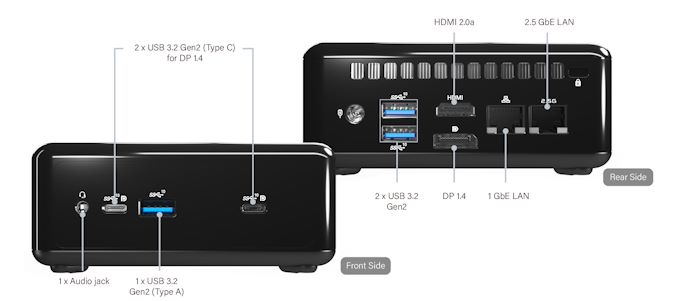
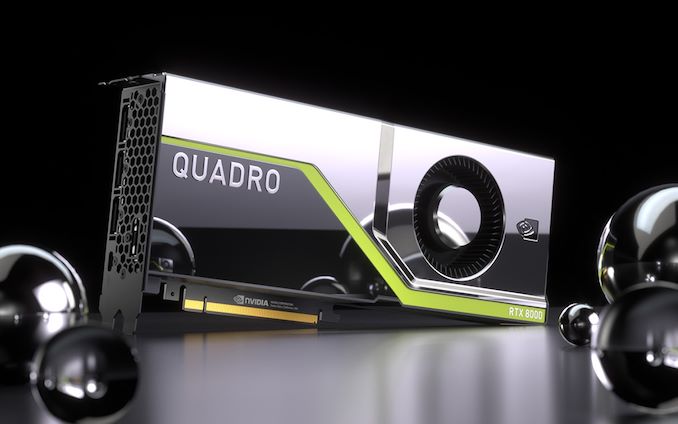
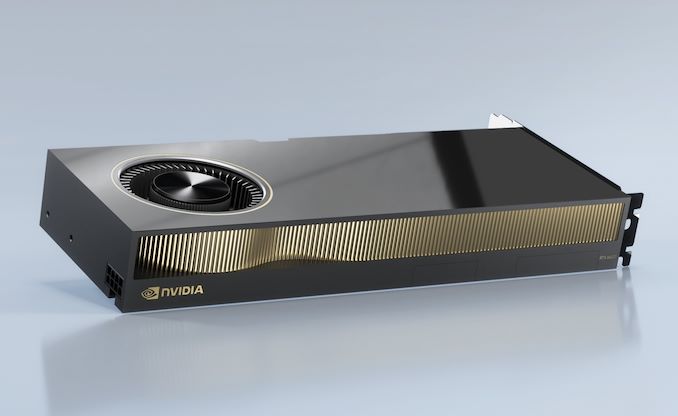

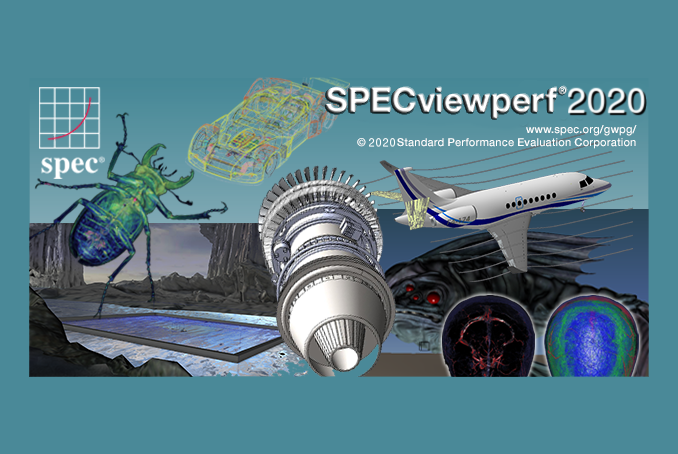
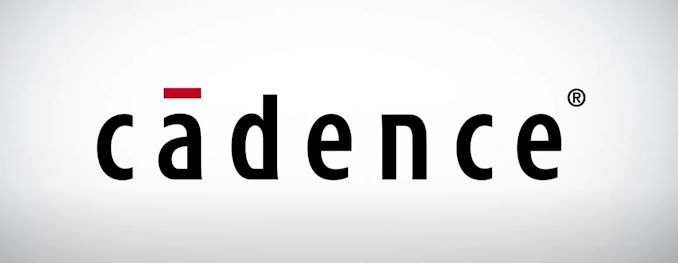
















Bookmarks